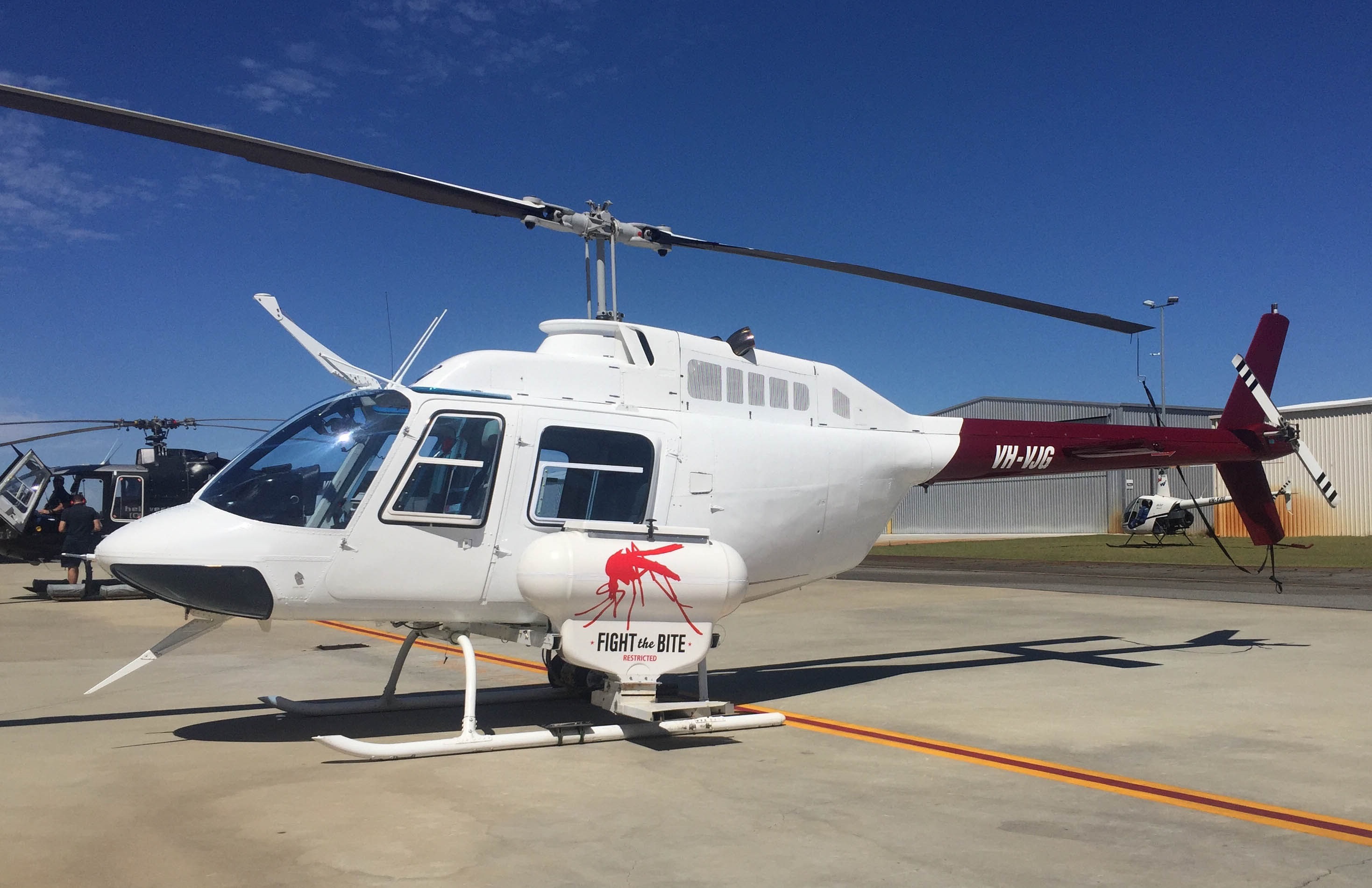
Aerial larviciding helicopter
South West coastal regions of WA have some of the highest incidence rates of the mosquito-borne diseases Ross River virus disease and Barmah Forest virus disease in the State.
Aerial larviciding, which targets mosquito larvae, is an important preventative public health measure to reduce the incidence of these mosquito-borne diseases.The Department of Health (The Department) funds the use of a helicopter for aerial application of mosquito larvicide in high mosquito-borne disease risk areas in the South West regions of:
- Peel
- Leschenault
- Geographe.
Mosquito breeding
Mosquito breeding is primarily determined by environmental and meteorological factors such as rainfall, temperature and tidal activity. Local governments monitor mosquito breeding habitats and submit a pre-treatment form to the Department when an aerial treatment is required. After reviewing the data, the Department notifies the helicopter contractor of the proposed treatment date. Local government staff record details of the treatment and conduct a post-treatment survey to determine its effectiveness in preventing adult mosquito emergence.
Larvicides
The aerial larvicides used in WA are S-methoprene and
Bacillus thuringiensis subspecies
israelensis (Bti). Both can be applied in either liquid form using a spray boom or granular form using hoppers. These products are target specific and have negligible impact on other aquatic and terrestrial species when used at label rates.
More information
Medical Entomology
Phone: (08) 9285 5500
Email: medical.entomology@health.wa.gov.au
Last reviewed: 05-10-2021